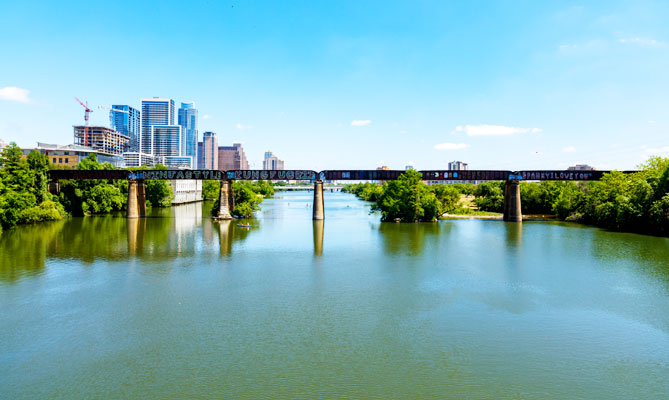When building a home or commercial property in Austin, one of the rules the city requires you to obey is the tree ordinance. Heritage trees and protected trees determine where and how your building will be constructed. This article discusses the city of Austin tree ordinance guidelines, what qualifies a heritage or protected tree and why all this matters.
Where To Find The City Of Austin Tree Ordinance Rules
The rules qualifying heritage trees and protected trees and the guidelines for removal are found in the Land Development Code, Section 25-8, Subsection 8. The rules pertaining to the design criteria for achieving the natural preservation goals stated in the Land Development Code are located in the Environmental Criteria Manual, Section 3. One must read the two sections together for a better comprehension of Austin tree ordinance rules.
Heritage And Protected Trees In Austin
Heritage Trees
A heritage tree is a tree with a diameter greater than or equal to 24 inches (2 ft.), measured 54 inches (4.5 ft.) from the existing ground. Only specific species of trees are considered heritage and these include:
- American elm
- Bald cypress
- Texas ash
- Walnut
- All oak trees
- Pecan
- Bigtooth maple
- Cedar elm
- Texas madrone
If a tree has multiple stems and the diameter of the largest trunk plus half of the rest of the stems is equal to or greater than 24 inches (2 ft.), it is regarded a heritage tree as well.
According to the city of Austin tree ordinance rules, landowners with trees with a diameter greater than 24 inches (2 ft.) but less than 30 inches (2.5 ft.) require an administrative variance before the tree removal. Similarly, trees with a diameter greater than 30 inches require a public hearing of the land use commission before the landowner is granted the ‘approval to remove’ variance.
Removal
A heritage tree can only be removed if a variance is granted. The only time this is exempted is if the tree is damaged and poses a danger to life or property. A variance to remove a heritage tree can only be approved if after evaluation of the city arborist, the tree is found to be:
- An impending hazard to life or property
- Dead
- Diseased and cannot be cured
- Diseased and could spread the disease to other trees and put their health in danger
Protected Trees
A protected tree is any tree whose diameter is equal to or greater than 19 inches (1.6 ft.), measured 54 inches (4.5 ft.) from the ground. This measurement is commonly known as diameter at breast height (DBH).
Removal
As with heritage trees, to remove a protected tree, a landowner will require a permit. The only exception will be if the tree is damaged or is a looming danger to life or property. And for a permit to be granted, the tree in question must meet any of the following criteria:
- It is dead
- It is an impending danger to life or property
- Prevents access to the property
- Prevents use of the property
- It is diseased and cannot be cured
- It is diseased and could spread the disease to other trees and put their health in danger
- If on a public property, blocks essential facilities like utility line, street, alley, drainage facility, etc.
Review Process For Austin Tree Permit

The Austin city provides two types of residential tree permits:
- Tree Ordinance Review Application (TORA)
- Residential New Construction & New Addition Application
The Tree Ordinance Review Application is required for:
- Diseased or dead trees and those that are a looming danger
- Consultations for commercial or residential developments
- Repair and replacement of commercial or residential utilities
- Commercial site plan exemptions
The Residential Permit is required for:
- Tree pruning that removes more than 25 % of the canopy
- Removal of a protected tree
- Any developments within the critical root zone
The Austin tree ordinance rules governing the granting of permits state that submittal of a TORA will not be necessary if the permitting process meets the above criteria. This is because, the tree permitting procedure for residential possessions (new, secondary unit, additions, duplexes, garage ports, pools) that meet the aforementioned criteria is incorporated into the Residential Plan Review application.
Tree Service Removal Overview
When it comes to constructing homes and commercial buildings in Austin, a good understanding of the city’s tree ordinance rules is important, as these rules determine where and how your property will be set up. Hopefully, this guide has shed some light on what you need to know about Austin’s heritage and protected trees, how to obtain a permit for their removal, as well as the circumstances on which the permit will be granted.



